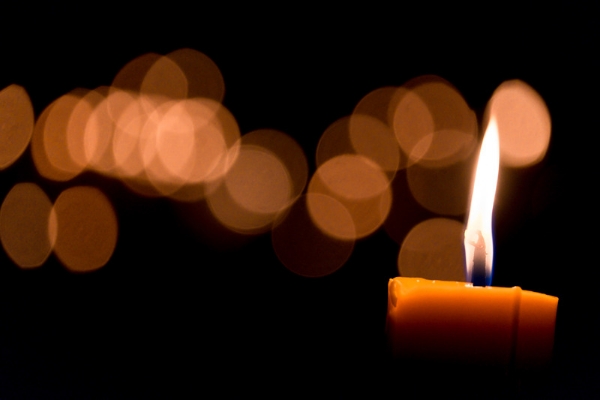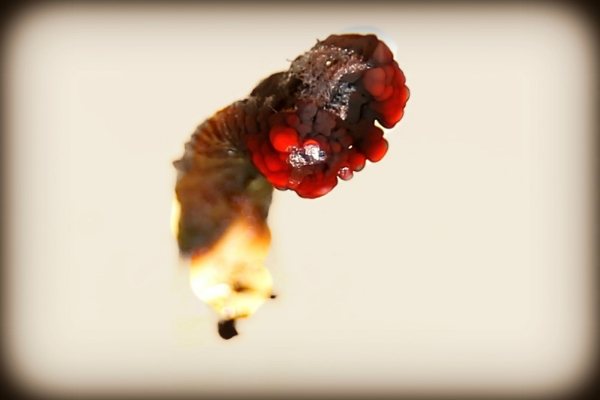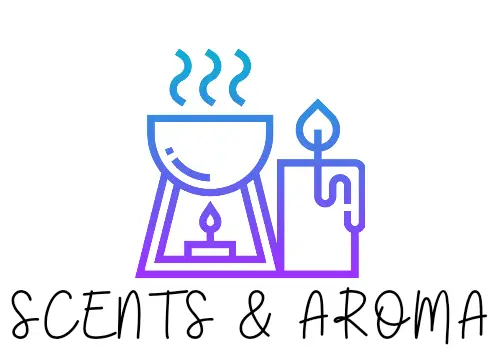A candle flame that is too high is not aesthetically pleasing. Apart from this, it can soon turn into a fire hazard. But why is your candle flame so high?
Well here is the quick answer, if you find that your candle flame is too high this is usually cause by either the wick being too long, too thick or by the type of wax and fragrance oil load in the wax.
When your candle flame is too high, it will mostly be because the wick is too long or thick. If the wick is too long, you will need to trim it till it reaches the normal length the wick should be.

On the other hand, if the wick is too thick, that is entirely on the manufacturer, and there is little you can do about it. An alternative is to substitute the thick wick for another one with the right diameter.
Apart from the wick, a candle flame can also be too high because of improper burn practices, fragrance oil load, and the type of wax used.
The quest for a perfect candle should not be deemed as an obsession. When your candle flame burns too high, it also means it is burning too hot.
Besides the fact that it doesn’t look aesthetically pleasing, there is also that small chance that the flame can spiral out of control and consume nearby objects. Let us closely examine why your candle flame may be too high.
The candle wick and how it works
When you light a candle, the flame’s high temperature melts the wax. This process is referred to as capillary action. The melted wax then travels up through the wick and serves as the fuel for the flame.
The wick is made from any absorbent twine just like a string, cords, or braided cotton. Hence, it allows easy wax movement.
Since the wax melts and serves the fuel, it vaporizes as it burns. The vaporization then releases fragrance into the air in case you use your candle for aromatherapy or burning essential oil.
When the capillary action is balanced, your candle will burn as it should, and the flame will not be too high. However, if the capillary action is not at equilibrium, you may need to make adjustments.
These are the reasons why your candle flame is so high
Below are some of the most common reasons that I have found for a candle flame that burns to high.
When the wick is too long
When the candle wick is too long, it causes the candle to burn hotter than it should and results in a high flame. For example, candle wicks should only be ¼ of an inch to keep the flame at <1-inch. In essence, when the wick is longer than it should, it gives more room for it to burn.
After using your candle for an extended period, the wick can become long. At this stage, the flame burns higher than it normally should.
Apart from being longer, the carbon buildup from the hydrocarbons makes the wick appear like a mushroom.
Since there is naturally more wick exposed at the top, it will cause your candle flame to burn so high.
To trim your wick properly you should really use a candle wick trimmer which makes cutting the tricky wick much easier, these ones on Amazon are very affordable but high quality.
When the wick is too large
Another common reason why your candle flame is so high is when the wick is too large. Just like the wick length, a large wick provides more surface area for the flame.
It is just like setting fire to a string or fabric or a dress. The more the surface area, the more room the flame has to burn. Likewise, a wick that is too large will cause the candle flame to burn so high.
In some cases, the wick as designed by the candlemaker can be too large for the wax or container. As a result of the large wick, the flame will only burn bigger and hotter.
Not only this, but the melt pool of wax will also be deeper. Sadly, as the melt pool deepens, the wick will stop operating after burning for a while.
It can also cause burning action on one part of the container and not the other since the melt pool eventually causes the wick to slump.
If you want to make your candle, we recommend that you compare wicks with the candle wax or fragrance oil for a better pairing.
For example, you can mix the fragrance and wax or use them separately and place different wick sizes in a jar. Then, burn and test your candles at the same time to see which burns better.

The type of wick and wax used
Candle wicks are designed to go with specific containers and wax. For example, certain wicks are made for either beeswax, paraffin wax, or soy wax.
Due to this distinction, you shouldn’t use a wick designed for beeswax candles for soy wax candles. This is because it will burn hot. If you do, the flame will be too hot and tall. As with the case of when the wick is too big, it will create a melt pool that will eventually cause you to go through your candles faster.
Like we explained, you need to consider the type of wax to determine why your candle is burning so high.
This is because wax blends have different melting points. As a result, a candle that uses coconut wax will have a smaller wick compared to another candle that is a blend of soy or paraffin wax.
To read more about the types of wax used in candles and their pros and cons have a look at the guide I wrote.
When the candle has burned too long
Forget the technicalities; it could simply be that your candle has burned too long. It is possible to match the right wick with the right candle, and the appropriate wax and the flame will still burn high.
This is because this process is normal for a candle that has burned for an extended period.
Let us explain the science. When the candle burns, the carbon buildup on the wick, and the fuel will increase to make more flames.
Since the buildup on the wick increases the flame size, the temperature of the candle container and the wax will also increase as your candle burns.
Then, the flame has more potential to burn hotter and taller. This is why some manufacturers recommend how long you should burn your candles.
The fragrance oil load
Fragrance oil burns easier than normal wax. As a result, the more fragrance oil you add to your candles, the more fuel it will have to make the flame.
This is more important for people that like it when their candle dispels sweet fragrance into the air. For example, two candles with 3% and 15% fragrance oil load won’t burn with the same intensity.
Therefore, you need to consider your load range to determine why your candle flame is high.
How to fix a wick that is too high?
When the end of your candle wick starts flowering or starts to look like a mushroom, it means that the wick is too long. Mushrooming candles occur when carbon builds up in the wick. Unlike the width that is the candlemaker’s fault, you can fix a wick that is too high.
If you discover this uneven length after already lighting the candle, let the wax cool to room temperature.
Then, use a wick trimmer, scissors, or nail cutter to trim the wick length. The ideal wick length is between ¼ inches and 1/8 inches. However, we recommend ¼ inches wick length.
This is because it lets you enjoy a controlled and clean burn every time you use your candle. After trimming the first time, you may need to re-trim the wick occasionally after an extended candle use.
After adjusting the wick, your candle flame should not be more than 1/2 inches in length, depending on the wick and the candle size.
However, in rare cases, the flame can be a little close to 2 inches in length. Regardless, the flame should offer a steady burn that doesn’t flicker too much nor produce smoke and soot.
When trimming your candle wick, be careful not to cut the wick too close as a short candlewick can also be a hassle.
Conclusion
Burning your candle without trimming the wicks can cause a high and dangerous flame. Apart from the risk of a fire hazard, the amount of soot increases and poses a significant health hazard.
A properly sized wick ensures a balanced burn pool and promotes a pleasant and safe flame height. Even for the aroma or fragrance, excess heat facilitates fragrance breakdown, requires a greater oxygen flow, and reduces scent evaporation.
The enjoyable scents of candles coupled with their glowing lights complement any interior space and are a welcome addition.
However, when a candle does not burn properly, it affects the indoor air quality and could pose serious health or fire hazard.
Trim long candle wicks, substitute thick wicks for thinner ones and ensure proper burn practices to prevent your candle flame from burning so high.
Why not check out some more of my candle information guides.
- Can You Put Perfume In A Humidifier? (Read First) - September 17, 2022
- Can You Put Essential Oil In A Steam Mop? (Safety Advice) - September 17, 2022
- How To Make Lavender Oil At Home ( Candles And Diffusers) - September 9, 2022
